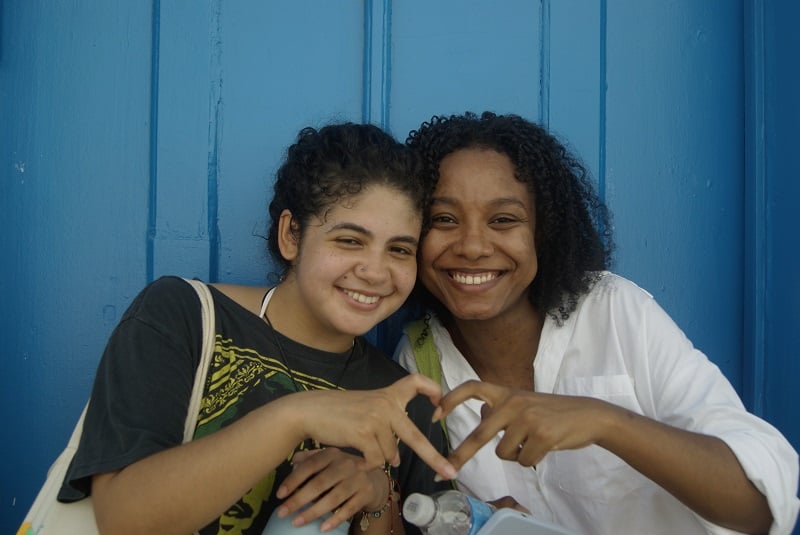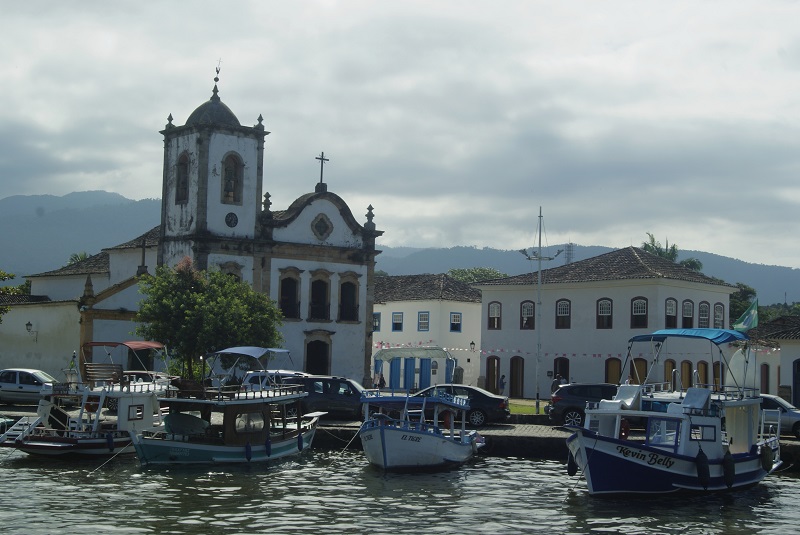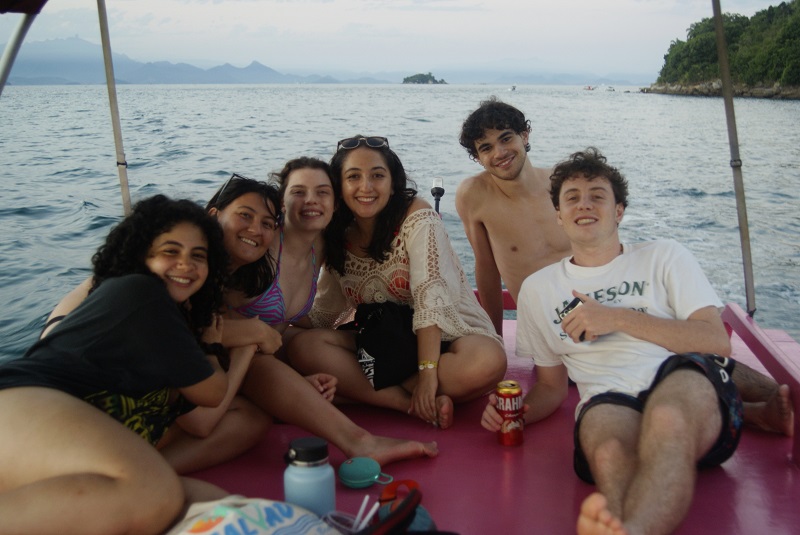Photos taken by Anna Hobbins (Tulane University), Student Correspondent for CET Brazil, Spring 2024
Situated halfway between our host city of São Paulo and the vibrant Rio de Janeiro, our CET cohort soaked up a weekend of sun with our Brazilian roommates in Paraty. Once the hub of colonial Brazil, Paraty served as the most crucial port for gold coming from the mines of Minas Gerais to ship to Portugal. Due to piracy, a safer route to Rio de Janeiro was eventually established, but Paraty still maintains its opulence and baroque architecture.
After centuries of isolation, Paraty has reemerged as a tourism destination for Brazilians and foreigners. The center of the city is defined by its sunken cobblestone streets, perfect for the monthly flood that comes in from the bay; when there is a full moon, and the tide is high, seawater rises above its normal levels and pours into the historic center through special openings in the seawalls that separate the city from the harbor. When this happens, locals travel by boat and kayak through the streets, setting out small bridges for pedestrians.
Arriving in Paraty

Our first day, we set out for the center, walking along the canal from our hotel to attend a historical tour. Here, we learned that Paraty was constructed by Freemasons, and one can note the hidden symbols of masonry in the colorful architecture of the center. There are iconic geometric ciphers, vertical bands of Freemasons’ geometric panels, and street corners with three pillars in stone and one in whitewash, symbolizing a triangle standing for liberty, equality, and fraternity. The old city was designed with 33 blocks (the Freemasons’ sacred number), the town was once governed by 33 councilmen, and you can find hidden 33s in the buildings of Paraty, often colored in blue and white, the ancient Masonic colors (see photos below).


Exploring Paraty


This trip, coordinated by our excellent CET staff, Súlia, Leandro, Vanessa, Vinny, and Mariana, was set aside for bonding and relaxing—so we got plenty of free time to take in the over 300 islands in its bay. After the historical tour, a few friends and I set out on a boat trip with a local guide and his bright pink boat, Cleopatra. Like many Paraty residents, Marco Aurelius makes his living off tourism, running multiple properties besides his iconic boat. Marco took us to a few of his favorite secluded beaches, recounting his wildest stories from a career catering to tourists worldwide. The highlight was Praia Vermelha, where we shared a meal on the beach, watching the last beachgoers and dogs play on the shore. As the sun set, we drove back to the port, saying our final goodbyes to Marco.


Ilha do Araújo
On our final full day in Paraty, we visited Ilha do Araújo. Measuring just 2 kilometers wide and 1 kilometer long, Araújo holds immense importance for the indigenous peoples, their fishing economy, and the growing market for community-based tourism.
Before 1999, Araújo, along with many other small islands around Paraty, had no system for waste collection. Led by the NGO SOS Mata Atlântica and their collective Jogue Limpo Cairuçu, awareness about sustainable waste management techniques has been spread from elementary schools onward. While this project has since fallen to the wayside on the neighboring islands, the movement is very alive in Araújo. Community leader Almir Tã and youth from the community shared the tools used for fishing, the history of this waste recycling movement, and their foray into the community-based tourism market. After their presentation, they accompanied us to a beach on the other side of the island, where we swam and relaxed.

A long weekend in Paraty proved good for the soul. Awaiting us was our last month in Brazil, final exams, and lots of teary goodbyes. Being part of a CET cohort means experiencing the ups and downs of being abroad together. Looking back on this semester, I cannot imagine it without the friends I made along the way. This weekend in Paraty was especially lovely as we spent it with our Brazilian roommates, who finally got a break from juggling school and work. This is the last blog I’ll write for CET Brazil. However, it is surely not the last time I’ll sing its praises, look back at pictures, or miss my friends and roommates.
